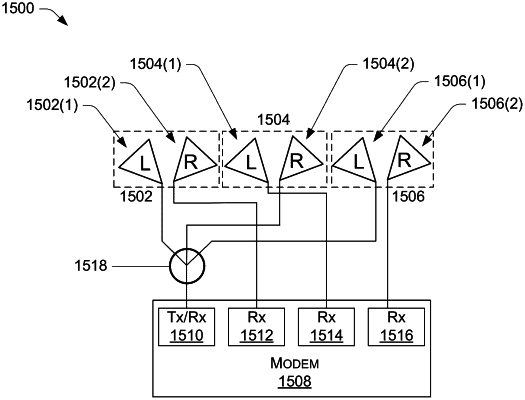| CPC H04B 3/542 (2013.01) [G01R 1/04 (2013.01); H01Q 3/28 (2013.01); H01Q 3/30 (2013.01); H04B 7/10 (2013.01)] | 20 Claims |

|
1. A device comprising:
a modem including a first feed port and a second feed port;
a first planar dual-polarized sub-array having a first beamwidth, the first planar dual-polarized sub-array including:
a first orthogonally polarized element communicatively coupled to the first feed port, and
a second orthogonally polarized element communicatively coupled to the second feed port; and
a second planar dual-polarized sub-array having a second beamwidth, the second planar dual-polarized sub-array including:
a third orthogonally polarized element communicatively coupled to the second feed port, and
a fourth orthogonally polarized element communicatively coupled to the first feed port,
wherein the first planar dual-polarized sub-array and the second planar dual-polarized sub-array generate a collective beamwidth that exceeds the first beamwidth and the second beamwidth.
|